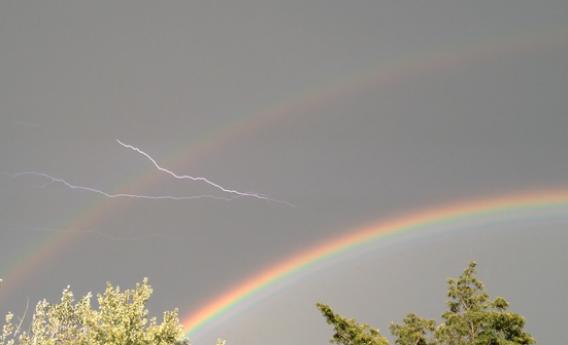Create a free profile to get unlimited access to exclusive videos, sweepstakes, and more!
Double Rainbow ... With Lightning!

One of the things I love about living in Boulder, Colorado, is that in the summer we tend to get afternoon storms. It’s sunny a lot here, which heats the land and evaporates water, forming clouds, and they can get a tremendous amount of energy in them. We get good downpours, and then when the storm is done, it’s done.
Because the wind blows predominantly west to east, and the storms are in the afternoon when the Sun is setting, when the clouds clear from the west the Sun shines through. If it’s still raining here, we can get extremely bright rainbows.
That weather pattern was common for the first couple of years I lived here, but in recent years it’s slacked off. But it’s coming back: Yesterday was a textbook case of this, and the rainbow was amazing.
Yeah, double rainbow all the way. The glow around my head’s shadow I was describing is called heiligenschein. The other optical effects—the secondary arc, the supernumerary arcs, the bright region in the center and the dark band—I’ve described recently in a post about red rainbows.
The lightning was amazing. It was so fast I didn't get a good look at it—I was paying attention to the phone screen to make sure the rainbow was visible in it—and for a moment I thought it might have been sunlight reflecting off raindrops. Then a few seconds later the thunder slammed down. It was far louder than it sounds on the video. It took about eight seconds to reach me, so the lightning was less than three kilometers away. Quite the show.
I will never get tired of seeing things like this. Rainbows are almost cliché, but they’re one of the most magnificent optical displays nature can provide. The science behind them is really intriguing, and to me, it amplifies their beauty manyfold.


























